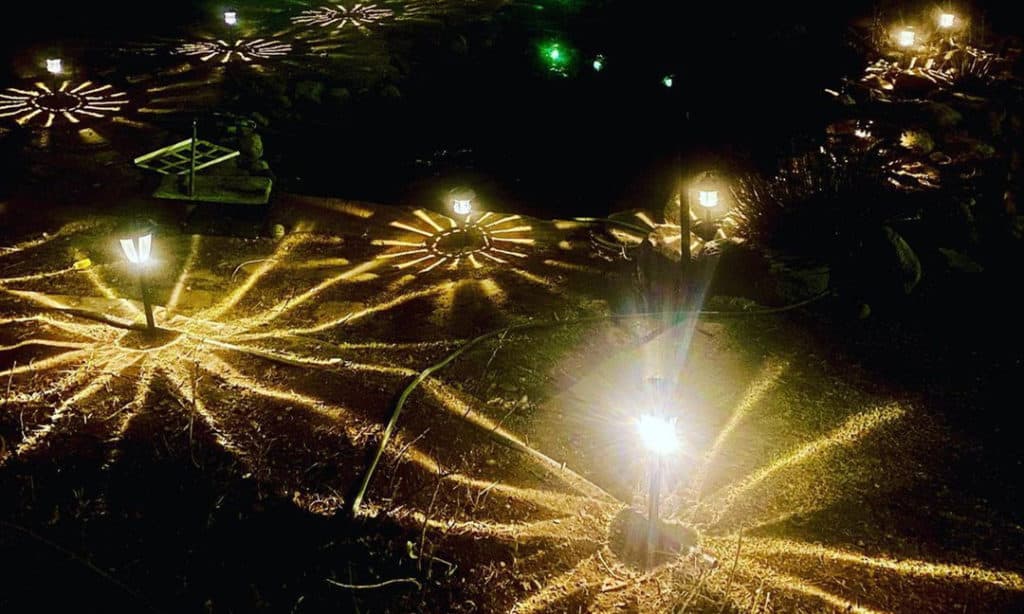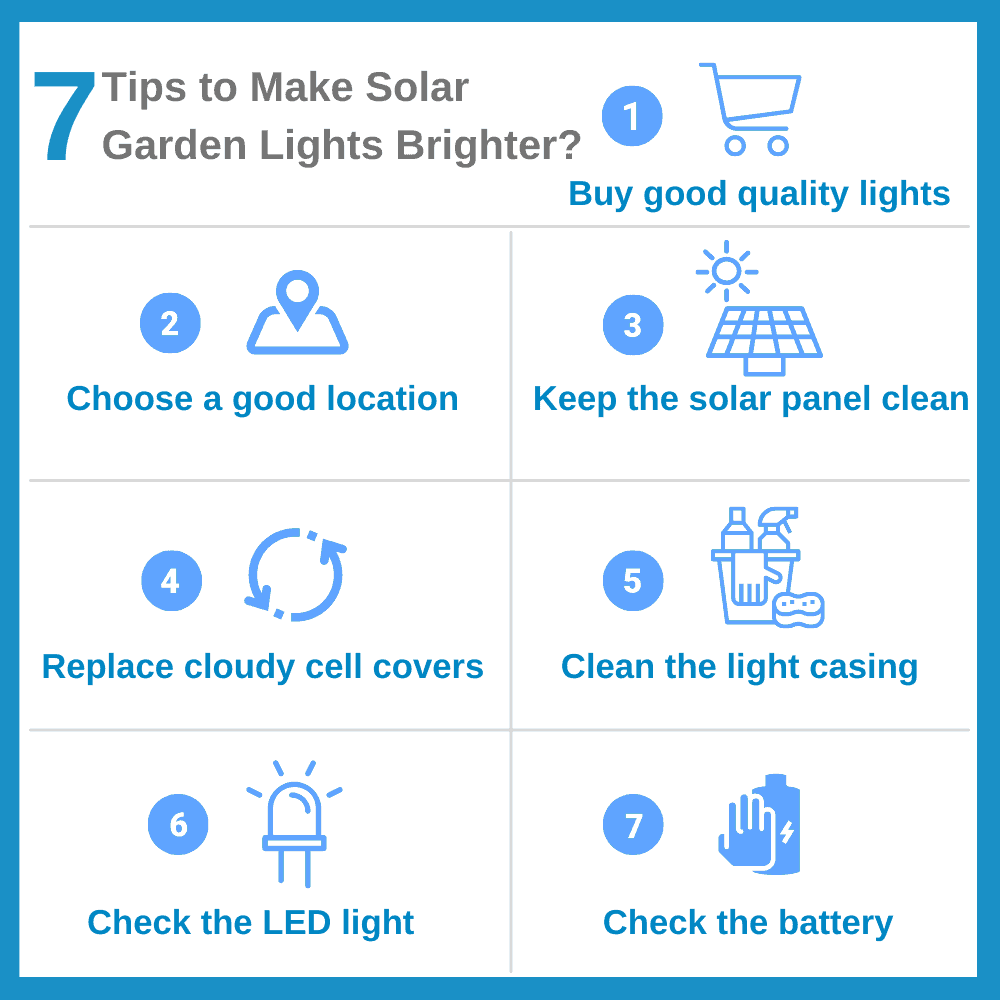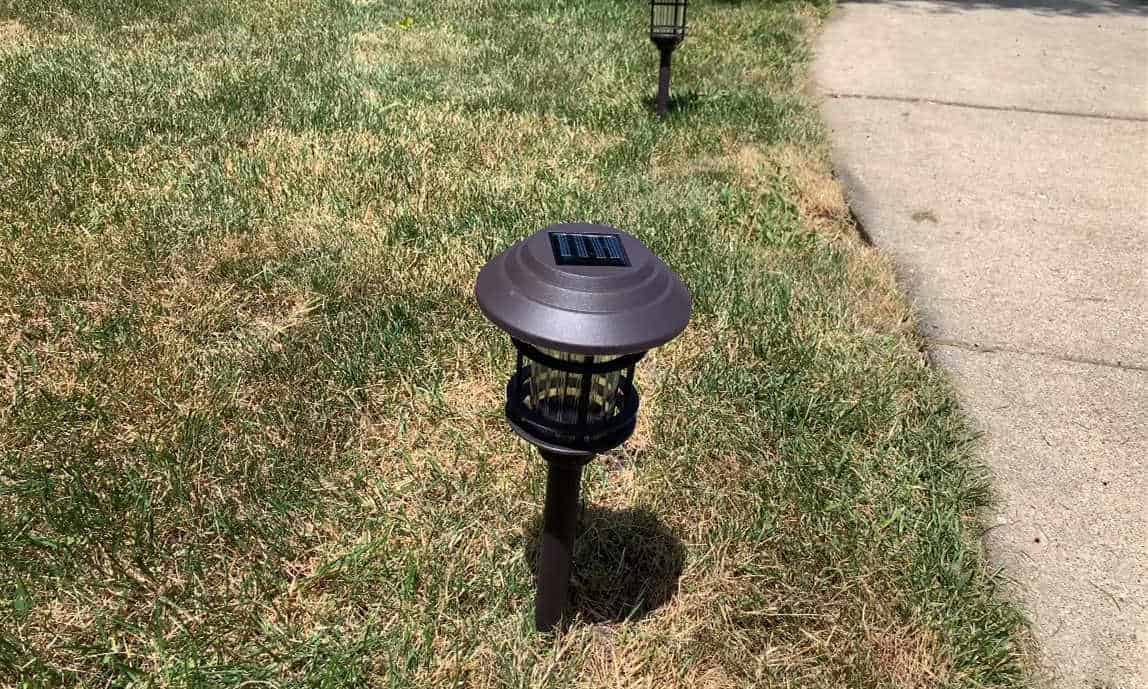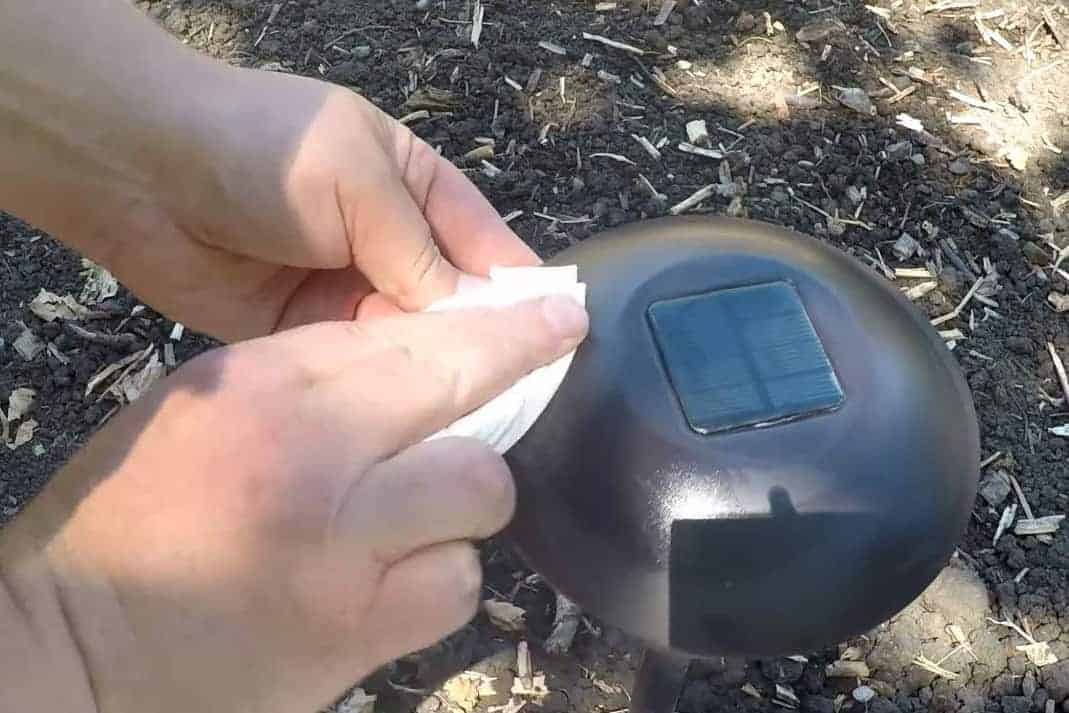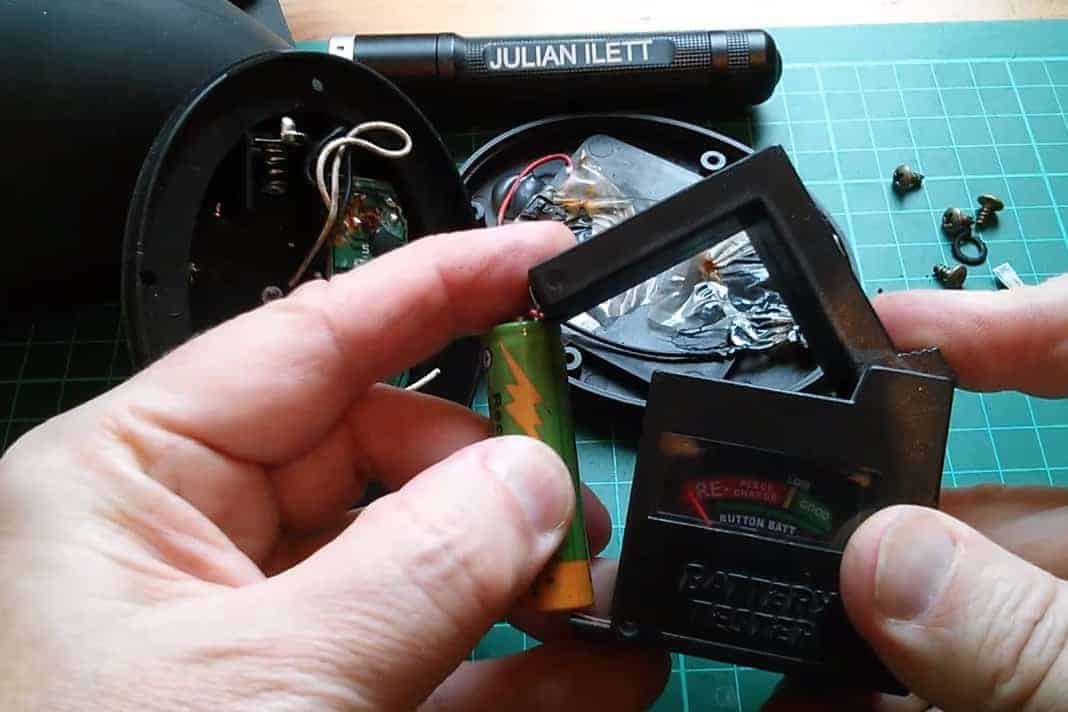It’s a common observation with electrical devices that they often work best when first used and may gradually deteriorate over time. You will be well aware of this fact if you have solar garden lights that started out bright but have now lost some of their shine.
This disappointing dimming has happened to my solar lights so I’ve developed several techniques to look after them and restore their brightness to first-use levels. Checking and maintaining your lights is a cheap and straightforward thing to do, and I strongly recommend that you give it a try. Here’s my guide on how to make solar garden lights brighter.
How solar garden lights work (and what can go wrong)
Solar lights collect sunlight during the day, convert it into electricity, and store this to power an LED light after dark.
The part of the solar light that converts sunlight into electricity is called a photovoltaic cell or solar cell. This unit contains a semiconductor (a substance that sometimes conducts electricity ) that reacts with sunlight to create a flow of charged particles called electrons. These electrons create an electrical current that is transferred into a battery, which is a chemical energy storage device.
A solar light contains a second photosensitive device called Photoresistor. This is a cunning piece of technology that tells the light to turn on after the sun goes down. The photoresistor again uses a semiconducting material to control the flow of electricity. This time the semiconductor prevents the flow of electricity during daylight hours but allows power to flow at night when it stops receiving light from the sun.
When electricity flows from the battery at night, it powers a light-emitting diode or LED bulb. This light operates throughout the night until the sun comes up the next day, causing the photoresistor to stop the flow of electricity.
This automatic on-off system is a convenient and energy-efficient way to ensure that solar lights only come on when needed.
The solar light contains cabling, circuit board, and a few other components but these are the principal elements. It’s worth noting that solar lights are an excellent choice for outdoor lighting because they are sealed units that don’t need external cables and are safe and weatherproof.
So our solar garden light contains some neat but delicate technology. To ensure peak performance, the light needs to be protected from the elements and placed in a position that maximizes sunlight.
How to make solar garden lights brighter
Now that we know what we’re dealing with, we’re ready to go through the different things you can do to keep your garden lights bright and healthy.
Tips 1. Spend a little more in the first place
“You get what you pay for” is an old saying, but still a valuable one. If you’re reading this article before buying a garden lighting system, then you still have time to shop around for the best quality product. A more expensive garden light from a reputable and well-known manufacturer is likely to stay bright and be easy to maintain.
Things to look out for are solid and well-sealed units that protect from water and dirt and keep the solar light running at peak performance. Tempered glass is a better material than plastic for a solar cell cover since it allows more sunlight through and is less likely to become cloudy as it ages.
Remember that your solar light doesn’t use any electricity from your mains supply, so the only cost to you is the cost of purchase. A sturdy and strongly built light will work better and for longer than a cheaper unit, ultimately giving you better value for money.
Tips 2. Place your solar garden lights in the best location
Solar lights collect and store electricity when they are exposed to direct sunlight. This doesn’t mean that they won’t work on cloudy or rainy days; solar cells still generate electricity from sunlight coming through clouds. What’s important is to put your solar lights in a location that receives a maximum of direct sunlight. In a garden setting, you should check whether trees, plants, or even your house come between the sun and your solar light.
In the northern hemisphere, the sun tracks across the southern side of the sky, so if you’re placing a solar light close to something like a tree, then it is a good idea to put it on the southern side, maximizing its daylight exposure.
If one of your solar lights isn’t performing as well as the rest, then perhaps it isn’t receiving much sunlight. Try relocating the light and see if this makes a difference. If not, then there may be another reason for the loss of performance.
Tips 3. Keep the solar panel clean
The diagram above shows the different layers that make up a solar cell, like in a solar garden light. The clear glass cover of the light is followed by an antireflective sheet that prevents light from being reflected away and escaping the cell. The example above uses a glass cover for the solar cell, but in cheaper solar lights, this outer layer is made from transparent plastic.
Since the solar cell is a sealed unit, you only have access to the cover. Still, you can ensure that your solar light captures the maximum energy from the sun by keeping the cover meticulously clean and free of foreign objects like dirt and stains.
Usually, rainfall will do an excellent job of cleaning the surface of your solar light, but checking and manually cleaning where necessary will ensure you get maximum brightness. When you wash the surface, make sure you use a soft sponge and a simple detergent. DO NOT use a strong cleaning chemical that can damage the surface.
Tips 4. Replace cloudy solar cell covers
If your solar light has a plastic cover over the solar cell and it becomes cloudy, then sunlight won’t be generating enough energy for peak performance. If the cover is a replaceable unit, simply remove the damaged cloudy cover and change it for a new one. This will make a big difference in the amount of electricity the light generates, and it will become bright again.
Tips 5. Clean the light casing
The glass or plastic case protecting the LED light is another part of your solar light that needs to be clean for peak performance. A dirty and stained case simply doesn’t let as much light through, so the light will appear less bright even though the LED light is working perfectly. All that you need to do is again clean the cover using a sponge and a mild detergent.
Tips 6. Check the LED light
One of the reasons that light-emitting diodes or LEDs are the favored light source for solar garden lights is that they last for a really, really long time. You can expect thousands of hours of service from your LED light. But, they do eventually wear out.
You’ll know when this happens, though, because they don’t gradually dim; they just lose power altogether. So if one of your lights goes out, then this may be the reason. If this is the case, and your light has a replaceable bulb, then simply put in a new LED light. With a sealed unit, unfortunately, you’ll have to replace the whole light.
Tips 7. Check the battery and connection terminals
Rechargeable batteries don’t last forever, and a damaged or soiled battery may be the reason that your solar light isn’t bright anymore. You should perform regular checks on the batteries in your solar lights to see if they are damaged or corroded. If they have become corroded, you will see a white substance around the connecting terminals. You can try to clean this away and see if it improves the battery’s performance.
For safety purposes, it’s important to wear goggles when carefully handling and cleaning batteries. You can clean any corrosion away using a vinegar-soaked cloth. If the solar light isn’t any brighter after cleaning, then it might be time to replace the rechargeable batteries.
Keep cleaning and checking
We’ve seen that a series of simple checks and maintenance will keep your solar lights performing at their best. The table below provides a quick summary of the steps you should take to make your solar garden lights brighter.
|
Tips 1 |
Buy good quality solar lights |
– Check product reviews and manufacturer ratings – check that the light is sturdy and well-sealed – glass is the best cover for solar cells |
|
Tips 2 |
Choose a good location |
– Make sure your garden light is in a place with lots of direct sunlight |
|
Tips 3 |
Keep the solar panel clean |
– Maximize charging potential by keeping your solar panel clean |
|
Tips 4 |
Replace cloudy cell covers |
– Plastic solar cell covers should be replaced when they become cloudy |
|
Tips 5 |
Clean the light casing |
– Make sure that light can get out as well as in |
|
Tips 6 |
Check the LED light |
– Replace LED bulbs when they expire |
|
Tips 7 |
Check the battery |
– Clean batteries carefully and replace where necessary |
If you have any questions or comments about the cleaning and maintenance of solar garden lights, then please share with us.

